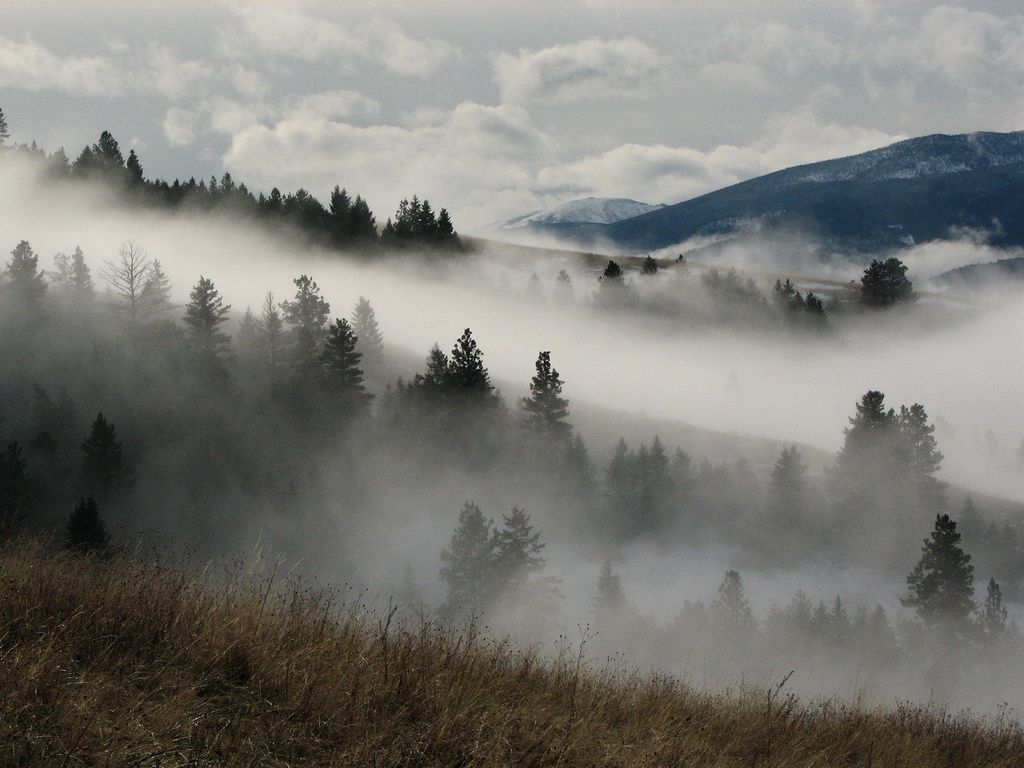Fog has long fascinated scientists and observers alike, serving as a silent messenger carrying vital information about our planet’s intricate microclimatic systems and environmental conditions.
🌫️ The Enigmatic Nature of Fog Formation
Fog represents one of nature’s most mysterious atmospheric phenomena, forming when water vapor condenses into tiny droplets suspended in the air near the Earth’s surface. This seemingly simple process conceals a complex web of interactions between temperature, humidity, topography, and atmospheric pressure that scientists continue to unravel.
The formation of fog occurs when air temperature drops to its dew point, the temperature at which air becomes saturated with moisture. This delicate balance creates conditions where water vapor transforms into visible droplets, reducing visibility and creating the characteristic misty veil we recognize as fog.
Different types of fog emerge depending on the specific meteorological conditions present. Radiation fog develops on clear, calm nights when the ground loses heat through radiation, cooling the air above it. Advection fog forms when warm, moist air moves over cooler surfaces, such as ocean currents or cold land masses. Valley fog accumulates in low-lying areas where cold air drains and pools, while upslope fog occurs when moist air rises along mountain slopes and cools adiabatically.
Fog as a Microclimate Indicator
Understanding fog patterns provides invaluable insights into local and regional microclimates. These microscale atmospheric conditions vary significantly across small geographical areas, influenced by factors such as elevation, vegetation, water bodies, and urban development. Fog acts as a visible marker of these subtle environmental variations, revealing information that might otherwise remain hidden.
Coastal regions particularly demonstrate fog’s role as a microclimate indicator. The interaction between ocean temperatures and land-based air masses creates predictable fog patterns that signal seasonal changes, ocean current shifts, and atmospheric stability. In California’s coastal zones, for instance, summer fog patterns have been studied for decades, revealing critical information about marine layer dynamics and climate trends.
Mountain ecosystems rely heavily on fog as both an indicator and provider of moisture. Cloud forests in tropical and subtropical regions depend on persistent fog to maintain their unique biodiversity. The presence, frequency, and duration of fog events in these areas signal broader environmental conditions affecting everything from plant growth to watershed health.
The Chemical Composition Within Fog Droplets
Fog droplets serve as microscopic laboratories, capturing and transporting various chemical compounds, pollutants, and biological materials through the atmosphere. Scientists analyze fog water chemistry to understand air quality, pollution sources, and atmospheric processes occurring at local and regional scales.
Each fog droplet contains dissolved gases, aerosol particles, and sometimes organic compounds that provide a snapshot of atmospheric conditions. Sulfates, nitrates, and other ions found in fog water reveal information about industrial emissions, agricultural activities, and natural processes. The pH levels of fog can indicate acid deposition patterns, while trace metals signal specific pollution sources.
Research conducted in urban and industrial areas has demonstrated that fog can contain significantly higher concentrations of pollutants compared to rainwater. This concentration effect occurs because fog droplets have smaller volumes relative to their surface area, allowing them to accumulate more atmospheric contaminants per unit of water.
Biological Dimensions of Fog Ecosystems 🦠
Beyond its physical and chemical properties, fog harbors entire communities of microorganisms, creating unique aerial ecosystems. Bacteria, fungi, algae, and other microscopic life forms inhabit fog droplets, using them as vehicles for dispersal and survival. This biological dimension of fog reveals fascinating connections between atmospheric conditions and living systems.
Studies have identified hundreds of bacterial species within fog samples, including both beneficial and potentially pathogenic organisms. These microbes influence cloud formation processes through ice nucleation, affecting precipitation patterns and atmospheric dynamics. Some bacteria possess proteins that facilitate ice crystal formation at relatively warm temperatures, demonstrating the intricate relationship between biological and physical atmospheric processes.
Plant pathogens often utilize fog as a dispersal mechanism, spreading diseases across agricultural landscapes. Understanding fog patterns and their biological cargo helps farmers and land managers predict disease outbreaks and implement preventive measures. This knowledge proves particularly valuable in regions where fog-borne plant diseases cause significant crop losses.
Fog Harvesting: Ancient Wisdom Meets Modern Innovation
Communities in arid and semi-arid regions have developed ingenious methods to harvest fog water, transforming atmospheric moisture into a viable water source. These fog collection systems represent both traditional knowledge and contemporary engineering solutions to water scarcity challenges.
Large mesh nets positioned perpendicular to prevailing fog winds capture tiny droplets, which coalesce and drain into collection systems. This simple yet effective technology provides potable water to communities in Chile, Peru, Morocco, and other fog-prone regions where conventional water sources remain scarce or unreliable.
Modern fog harvesting projects combine traditional techniques with advanced materials and monitoring systems. Researchers optimize mesh designs, study fog microphysics, and develop predictive models to maximize water collection efficiency. These initiatives demonstrate how understanding fog’s microclimate role translates into practical solutions for sustainable water management.
The Intersection of Fog and Climate Change 🌍
Climate change affects fog patterns worldwide, with significant implications for ecosystems, water resources, and human activities. Long-term observations reveal shifting fog frequencies, durations, and distributions that reflect broader atmospheric transformations occurring across the planet.
Coastal fog trends in several regions show notable declines over recent decades. California’s coastal fog has decreased by approximately 33% since the early 20th century, correlating with ocean temperature changes and atmospheric circulation patterns. These shifts impact redwood forest ecosystems, agricultural systems dependent on fog moisture, and coastal climate regulation.
Conversely, some regions experience increased fog events as climate patterns shift. Changes in temperature gradients, humidity levels, and wind patterns create new fog-prone areas while reducing fog in traditional locations. Understanding these transitions helps scientists predict future environmental conditions and develop appropriate adaptation strategies.
Fog’s Role in Temperature Regulation
Fog significantly influences local temperature patterns, acting as both an insulator and coolant depending on conditions. During daytime hours, fog reflects incoming solar radiation, keeping surface temperatures cooler than they would be under clear skies. At night, fog acts as a blanket, preventing heat from escaping and moderating minimum temperatures.
These temperature-regulating effects create unique microclimate conditions that support specialized plant and animal communities. Agriculture in fog-prone regions benefits from reduced temperature extremes, lower evapotranspiration rates, and supplemental moisture from fog drip. Vineyards in coastal California and coffee plantations in Central American highlands depend on fog’s moderating influence for optimal crop production.
Urban areas experience modified fog patterns due to the heat island effect, building configurations, and altered surface properties. Cities often generate their own microclimates where fog forms differently than in surrounding rural areas. Studying these urban fog patterns provides insights into how human development influences local atmospheric conditions.
Advanced Technologies for Fog Research 📡
Modern scientific instruments and monitoring systems have revolutionized fog research, enabling detailed observations of fog microphysics, chemistry, and dynamics. Remote sensing technologies, automated weather stations, and mobile laboratories provide unprecedented data about fog characteristics and behaviors.
LiDAR systems measure fog density, droplet size distributions, and three-dimensional fog structure with remarkable precision. These instruments emit laser pulses that reflect off fog droplets, providing detailed information about fog properties throughout its vertical and horizontal extent. Such data helps researchers understand fog formation mechanisms and improve weather prediction models.
Satellite imagery allows scientists to track fog patterns across vast geographical areas, identifying trends and anomalies that ground-based observations might miss. Specialized sensors detect fog characteristics from space, distinguishing fog from other cloud types and mapping its distribution across continents and oceans.
Citizen Science and Fog Monitoring
Community-based fog observation networks complement professional research programs, expanding spatial and temporal coverage of fog data collection. Citizen scientists contribute valuable observations about local fog conditions, helping researchers understand how fog varies across diverse landscapes and timeframes.
Simple fog monitoring protocols enable interested individuals to record fog frequency, duration, and characteristics using basic equipment. These grassroots efforts generate datasets spanning years or decades, revealing long-term trends that might otherwise remain undetected. Educational programs associated with citizen science initiatives foster environmental awareness and scientific literacy within communities.
Mobile applications now facilitate fog reporting and data sharing, connecting observers worldwide in collaborative research networks. These digital tools streamline data collection, quality control, and analysis, making citizen science contributions more valuable and accessible to researchers.
Fog in Cultural and Historical Contexts 🎭
Throughout human history, fog has inspired myths, legends, and cultural traditions while influencing settlement patterns and human activities. Ancient civilizations developed explanations for fog’s mysterious appearances, often attributing supernatural or spiritual significance to these atmospheric events.
Maritime cultures particularly developed rich traditions surrounding fog, recognizing both its dangers and benefits. Coastal communities learned to navigate fog-shrouded waters using specialized knowledge about fog patterns, ocean currents, and local geography. These traditional ecological knowledge systems represent accumulated wisdom about microclimatic conditions passed down through generations.
Fog has influenced literature, art, and popular culture, serving as a metaphor for mystery, uncertainty, and the unknown. From Victorian London’s infamous “pea-soupers” to San Francisco’s romantic fog-draped landscapes, these atmospheric phenomena have shaped cultural identities and inspired creative expression.
Future Directions in Fog Research and Application
Advancing fog science promises exciting discoveries and practical applications in coming years. Researchers continue exploring fog’s role in atmospheric processes, ecosystem functioning, and climate systems while developing innovative technologies to harness fog’s potential benefits.
Improved weather prediction models incorporating detailed fog physics will enhance forecasting accuracy for aviation, transportation, and agriculture. Understanding how fog interacts with air pollution, greenhouse gases, and aerosols will contribute to better air quality management and climate change mitigation strategies.
Biomimetic technologies inspired by fog-harvesting beetles and plants may revolutionize water collection systems. These nature-inspired designs could provide sustainable water sources for communities worldwide while minimizing environmental impacts associated with conventional water infrastructure.
Integrating Fog Knowledge into Environmental Management
Comprehensive environmental planning increasingly recognizes fog as a critical component of ecosystem health and resilience. Conservation strategies incorporate fog patterns when designing protected areas, restoration projects, and climate adaptation measures.
Agricultural extension services provide fog-related guidance to farmers, helping them optimize irrigation, pest management, and crop selection based on local fog characteristics. Understanding fog’s microclimate effects enables more efficient resource use and improved agricultural sustainability.
Urban planners consider fog dynamics when designing cities, recognizing that building configurations, green spaces, and surface materials influence local fog patterns. Creating fog-friendly urban environments can enhance livability, reduce energy consumption, and support biodiversity within metropolitan areas.
The Invisible Orchestra of Atmospheric Processes 🎵
Fog represents just one instrument in the complex orchestra of atmospheric phenomena, yet its role proves essential to the overall performance. By studying fog’s characteristics, behaviors, and interactions, scientists gain insights into broader environmental systems and processes shaping our planet.
The mysteries fog carries extend far beyond simple visibility reduction. Each fog event provides clues about temperature patterns, humidity distributions, wind dynamics, and chemical transformations occurring throughout the atmosphere. This information helps researchers understand everything from local weather patterns to global climate trends.
As climate change continues altering atmospheric conditions worldwide, monitoring and understanding fog patterns becomes increasingly important. Changes in fog frequency, intensity, and distribution serve as early warning signals for broader environmental transformations requiring attention and response.
The microclimatic secrets fog unveils remind us of nature’s interconnectedness and complexity. From microscopic bacteria riding fog droplets to massive redwood forests dependent on fog moisture, these atmospheric phenomena connect diverse scales and systems in remarkable ways. Continued research and observation will undoubtedly reveal additional mysteries hidden within fog’s misty embrace, enriching our understanding of Earth’s atmospheric processes and inspiring new approaches to environmental challenges.
Whether viewed through scientific instruments or experienced firsthand during a morning walk, fog invites contemplation of the invisible forces shaping our environment. Its ephemeral beauty masks sophisticated physical, chemical, and biological processes worthy of ongoing investigation and appreciation. By unveiling fog’s secrets, we gain not only scientific knowledge but also deeper connection to the atmospheric systems sustaining life on our remarkable planet.
Toni Santos is a visual storyteller and artisan whose creations celebrate the poetry of the natural world. Through his thoughtful artistic lens, Toni captures the elegance of botanical forms, transforming them into meaningful expressions of symbolism, resilience, and timeless beauty.
His journey is deeply rooted in a passion for flora and the mysteries they carry. From the shape of a petal to the curve of a vine, each design Toni brings to life reflects a deeper narrative — one of growth, transformation, and harmony with nature. Whether crafting symbolic floral jewelry, enchanted botanical illustrations, or seasonal visual studies, Toni’s work evokes the quiet magic found in Earth’s most delicate details.
With a background in handcrafted artistry and visual design, Toni blends technique with intention. His creations do more than decorate — they speak, often inspired by ancient meanings behind flowers, the cycles of the seasons, and the invisible bonds between nature and spirit.
As the creative voice behind Vizovex, Toni shares this botanical journey with the world, offering curated stories, handcrafted collections, and thoughtful articles that help others reconnect with nature’s symbolism and artistic essence.
His work is a tribute to:
The quiet power of flowers and their messages
The art of visual symbolism in everyday life
The beauty of slowing down to see what’s hidden in plain sight
Whether you’re an artist, a nature lover, or someone drawn to the deeper meanings behind the natural world, Toni welcomes you to explore a space where aesthetics meet soul — one petal, one story, one creation at a time.





